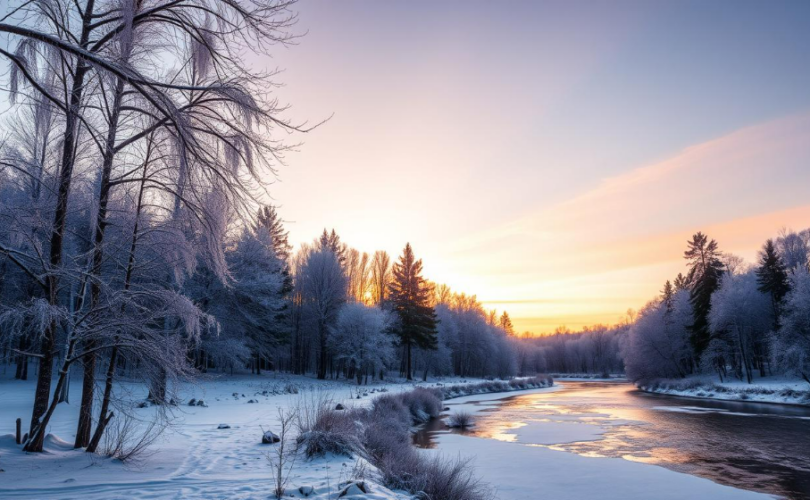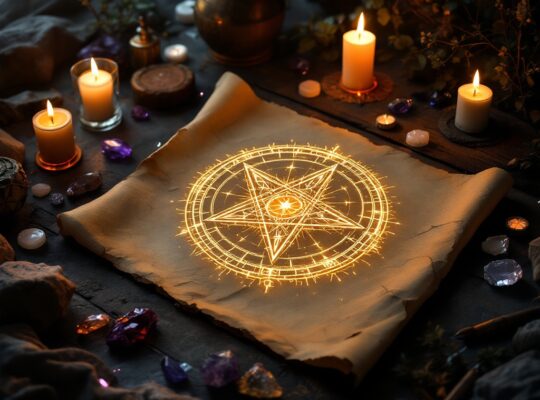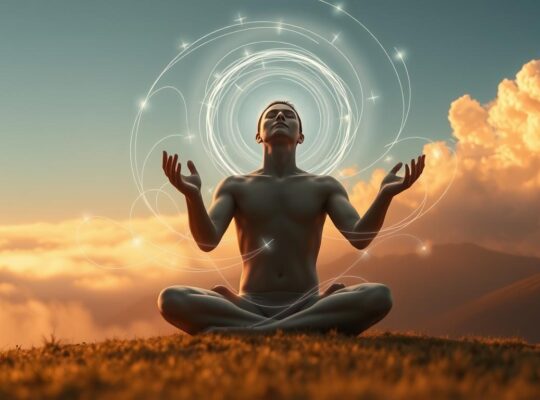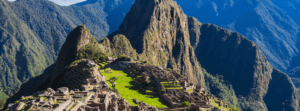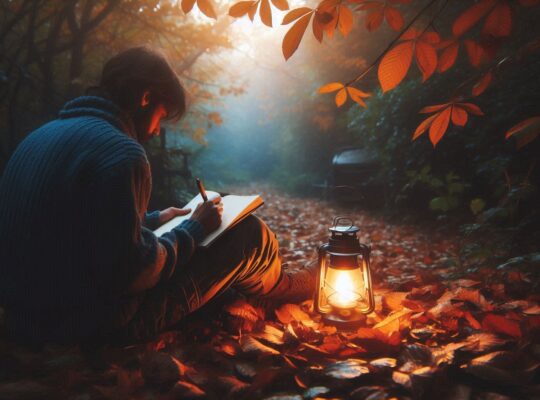As the days get shorter and nights longer, I’m drawn to the winter solstice. This event happens around December 21st. It’s the shortest day and longest night in the Northern Hemisphere. The Earth’s North Pole is tilted furthest from the Sun, making it a special astronomical event.
The winter solstice is more than just darkness. It’s a turning point, a moment of renewal and hope. We start our journey back to longer days and the promise of spring. Even though it’s cold, it reminds us of life’s cyclical nature and resilience.
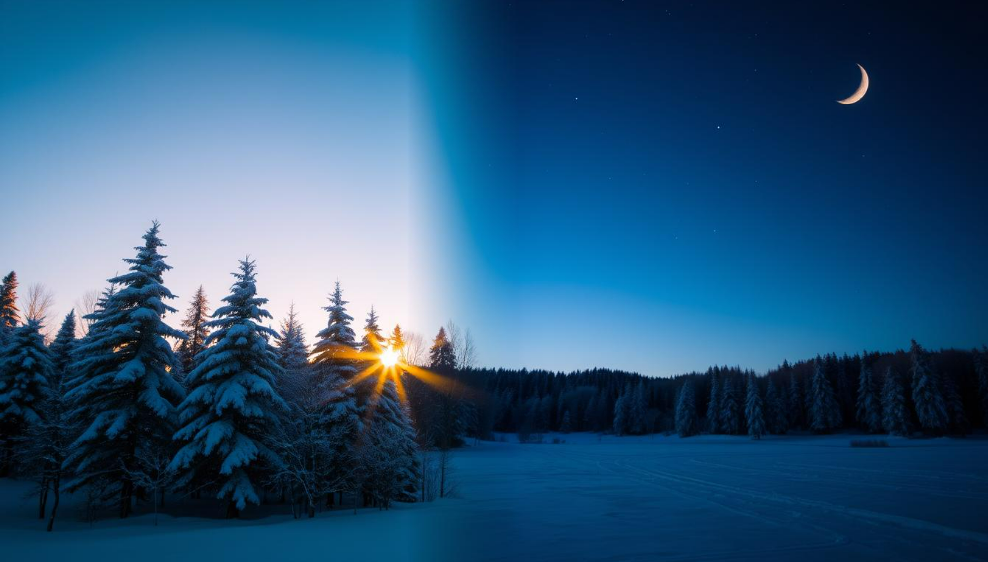
Key Takeaways
- The winter solstice is the day with the fewest hours of daylight in the Northern Hemisphere.
- The Earth’s tilt away from the Sun during the solstice results in shorter days and longer nights.
- The winter solstice marks a turning point, as the days begin to get longer again.
- Many ancient cultures celebrated the winter solstice with festivals and rituals.
- The winter solstice is an astronomical event with profound cultural and spiritual significance.
Understanding the Astronomical Phenomenon
The winter solstice is a special event caused by Earth’s tilt of 23.4 degrees. This tilt makes the North Pole face away from the Sun in winter. As a result, the Sun seems lower, and days are shorter.
The exact moment of the winter solstice is when the Sun hits its lowest point from the equator.
Earth’s Axial Tilt and Its Effects
The Earth’s tilt of 23.4 degrees is why we have winter solstice. This tilt means the Northern Hemisphere gets less sunlight in winter, leading to cold and short days. Meanwhile, the Southern Hemisphere enjoys summer on the same day, with longer days and warmer weather.
The Science Behind the Shortest Day
The winter solstice is the shortest day and longest night in the Northern Hemisphere. The Sun appears lower, giving us less sunlight. After this, the Sun’s path moves north, making days longer and nights shorter.
Solar Positioning Throughout the Year
The Sun’s position changes throughout the year due to Earth’s tilt and orbit. In summer, the Sun is over the Tropic of Cancer, giving us the longest day. The winter solstice, on the other hand, marks the Sun’s lowest point, making it the shortest day.
| Equinox | Summer Solstice | Winter Solstice |
|---|---|---|
| The length of day ranges from about 12 hours and six and one-half minutes at the equator to 12 hours and 16 minutes at 60 degrees latitude. | The sun is directly over the Tropic of Cancer, located at 23.5° latitude North, providing the longest day of the year. | The sun is directly over the Tropic of Capricorn, located at 23.5° south of the equator, resulting in the shortest day and longest night of the year. |
The winter solstice is a key event that many cultures have celebrated for centuries. Learning about its science, from Earth’s tilt to the Sun’s path, shows us the beauty of our solar system and its rhythms.
The Exact Timing of Winter Solstice
The winter solstice happens a bit differently every year. It marks the start of winter in the Northern Hemisphere. In 2024, it will be on December 21st at 9:21 AM GMT in the UK. It’s the day with the least daylight and the longest night.
Many cultures celebrate the winter solstice over several days. It’s a time of festivals and rituals, marking the end of shorter days and the start of longer ones. Places like Stonehenge in England and Newgrange in Ireland are famous for their solstice alignments.
| Location | Daylight on Shortest Day |
|---|---|
| Toronto, Canada | Around 8 hours and 56 minutes |
| Miami, Florida | Around 10 hours and 32 minutes |
The winter solstice is a key event celebrated for thousands of years. As the days get longer, we look forward to spring. It’s a time of joy and the sun’s return.
“The winter solstice has always been special because it marks the turning of the sun’s path northward. It is the ‘first day of spring’ (that is, the first day of the returning light), and a reason to celebrate.” – John Matthews, author and folklorist
Ancient Monuments and Solar Alignments
Around the world, ancient civilizations built amazing monuments and sacred sites. These were aligned with solar rituals and celestial movements. They showed the advanced knowledge of astronomy and the importance of the winter solstice.
Stonehenge and Its Solar Connection
Stonehenge in England is a famous example. Built around 3000 B.C., it marks the Sun’s relationship with the seasons. Every summer solstice, thousands gather to see the Sun rise over the Heel Stone.
Global Sacred Sites and Their Significance
In Peru, Machu Picchu’s Intihuatana stone aligns with the cardinal points. Its shadow disappears at noon on the equinoxes. In Mexico, Chichen Itza’s Mayan pyramid shows a snake pattern on the spring equinox. The Ancestral Puebloans in New Mexico carved spiral designs to track the seasons.
In Ireland, Newgrange is lit by sunlight for 17 minutes at dawn on the winter solstice. Only 100 people can enter through a lottery. In Egypt, the Sphinx aligns with the Sun on equinoxes, and the Sun sits behind the Sphinx at the Pyramid of Khafre’s southern corner.
Archaeological Evidence of Solstice Worship
These monuments and sites show the ancient reverence for the winter solstice and solar celebrations. Their solar-centric designs highlight the deep connection with celestial movements and seasons.
Cultural Significance Across Civilizations
The winter solstice has been important to many cultures for centuries. In ancient Rome, Saturnalia was a week of fun before the solstice. Slaves were treated as equals during this time. The Romans also celebrated Juvenalia for the kids and Mithra’s birthday on December 25, mixing with Sol Invictus later on.
Many ancient cultures, like the Maya and Inca, and the Celts and Scandinavians, celebrated this day. The Inca Empire honored the sun god Inti with Inti Raymi in Peru. They fasted, did sunrise rituals, made sacrifices, and lit fires with mirrors. In China, Dong Zhi welcomes longer days with food like tang yuan and dumplings.
Worldwide, the winter solstice is seen as a time of rebirth and light over darkness. In Japan, Toji starts the new year with health and luck. They light bonfires, take yuzu baths, and eat kabocha squash. Iranians celebrate Shab-e Yalda with ancient Zoroastrian traditions, wish-making, feasting, and poetry.
The Zuni and Hopi tribes in the U.S. celebrate with dances like Shalako and Soyal. These involve fasting, prayer, and sun rebirth celebrations, each with its own meaning. These traditions show the winter solstice’s lasting importance worldwide.
| Culture | Winter Solstice Celebration | Customs and Rituals |
|---|---|---|
| Ancient Rome | Saturnalia, Juvenalia, Mithra’s birthday | Temporary freedom for enslaved individuals, feasting, gambling, gifts |
| Inca Empire | Inti Raymi | Fasting, sunrise rituals, sacrifices, fire kindling with mirrors |
| China | Dong Zhi | Welcoming longer days, traditional foods like tang yuan and dumplings |
| Japan | Toji | Lighting bonfires, taking yuzu-scented baths, eating kabocha squash |
| Iran | Shab-e Yalda | Wish-making, feasting on nuts and pomegranates, reading poetry |
| Zuni and Hopi Tribes | Shalako and Soyal | Fasting, prayer, celebrations around the rebirth of the sun |
The winter solstice has a special place in many cultures, from ancient Rome to today’s Japan. It’s a time to welcome the sun, celebrate renewal, and enjoy the changing seasons.
Winter Solstice Celebrations Around the World
As the winter solstice nears, cultures worldwide celebrate with unique traditions and festivals. From pagan rituals in Europe to lively celebrations in Asia, this event holds deep meaning across the globe.
European Pagan Traditions
In Europe, the winter solstice is celebrated with pagan traditions. The Yule festival features burning Yule logs and decorating homes with evergreens like holly and mistletoe. The Scandinavian Feast of Juul honors Thor, with feasting, gift-giving, and candle lighting to welcome the sun’s return.
Asian Winter Festivals
Asia also celebrates the winter solstice with its own traditions. China’s Dongzhi Festival marks the shift from yin to yang energy, as days grow longer. Families come together for traditional foods and rituals, symbolizing the sun’s renewal. Iran’s Yalda Night involves staying awake, reading poetry, and enjoying pomegranates and watermelons.
Modern Day Observances
Modern celebrations also mark the winter solstice. At Stonehenge in England, people gather to welcome the dawn and watch the sunrise. In New York City, Paul Winter hosts an annual solstice concert at the Cathedral of St. John the Divine, offering a spiritual experience.
The winter solstice is a time for reflection, celebration, and looking forward to longer days. As people around the world celebrate, the solstice’s universal importance is clear. It reminds us of our connection to nature’s rhythms.
| Winter Solstice Tradition | Location | Key Rituals and Celebrations |
|---|---|---|
| Yule | Europe | Burning of Yule logs, decorating with evergreens |
| Feast of Juul | Scandinavia | Honoring the Norse god Thor, feasting and gift-giving |
| Dongzhi Festival | China | Family gatherings, traditional foods, celebrating the return of longer days |
| Yalda Night | Iran | Staying awake through the longest night, reading poetry, eating pomegranates and watermelons |
| Stonehenge Gathering | England | Welcoming the dawn, observing the sunrise through the iconic stones |
| Paul Winter Solstice Concerts | New York City | Spiritual and musical celebration at the Cathedral of St. John the Divine |
“The winter solstice is a time of reflection, celebration, and the anticipation of longer, brighter days ahead. As the global community embraces this timeless tradition, the universal significance of the solstice shines through, reminding us of our deep connection to the rhythms of the natural world.” –
The Length of Day Versus Night
The winter solstice is the shortest day of the year. The sun is directly over the Tropic of Capricorn at 23.5° south of the equator. This means the Northern Hemisphere gets the least daylight and longest night.
In London, the shortest day is only 7 hours, 49 minutes, and 42 seconds long. This is nearly 9 hours less than the summer solstice. The difference in daylight and night hours changes with latitude. Places near the poles see the biggest differences.
After the winter solstice, days start getting longer. But, the coldest temperatures come later, by several weeks. At 40° north latitude, the earliest sunset is around December 8. The latest sunrise is on January 5. The day with the least daylight is the winter solstice, on or about December 21.
| Latitude | Daylight Length | Night Length |
|---|---|---|
| Equator | 12 hours, 6.5 minutes | 11 hours, 53.5 minutes |
| 30° North | 12 hours, 8 minutes | 11 hours, 52 minutes |
| 60° North | 12 hours, 16 minutes | 11 hours, 44 minutes |
The solar day can vary by up to half a minute from the standard 24 hours. This is because the sun’s movement across the sky changes slightly throughout the year.

“The winter solstice is a time of celebration, a reminder that even in the darkest of seasons, the light will return.”
Winter Solstice and Seasonal Transitions
The winter solstice is a big change, starting astronomical winter in the Northern Hemisphere. But, it’s key to know the difference between astronomical and meteorological winter.
Meteorological Versus Astronomical Winter
Meteorologists split the year into four seasons for studying temperature. So, meteorological winter starts on December 1st. But, astronomical winter is tied to the solstice, which was on December 20th, 2022, at 4:20 a.m. EST.
Temperature Patterns Following the Solstice
The winter solstice is the shortest day, but the coldest days come later. This is because of the Earth’s thermal inertia, where oceans and land take time to cool down. So, the coldest days usually happen in January or February, not right after the solstice.
The winter solstice and the changes that follow are a big deal in nature. It’s a time for quiet, thinking, and resting, as the days get longer and spring starts to show.
Traditional Rituals and Ceremonies
The winter solstice marks the shortest day and longest night of the year. It’s celebrated with many rituals and ceremonies across cultures. These celebrations often focus on themes of rebirth, renewal, and the return of light. Many involve lighting fires or candles to symbolize the sun’s gradual reemergence.
In Scandinavia, the Feast of Juul included burning a Yule log to honor the sun’s rebirth. Druids gathered at Stonehenge to witness the sunrise. In Japan, people take yuzu baths for good luck during winter solstice celebrations. These rituals often include communal gatherings, special foods, and symbolic actions to mark the seasonal wheel’s turn.
- The Hopi Indian Festival of Soyal, the Polish celebration of Gody, Greece’s Brumalia, and the Hindu Makar Sankranti are global winter festivals with deep solstice roots.
- Symbolic elements like the Oak King and Holly King, representing the battle between summer and winter, are used in many solstice ceremonies.
These rituals and ceremonies, filled with ancient wisdom, continue to captivate and inspire people worldwide. They celebrate the wondrous cycle of the seasons and the eternal dance of light and dark.
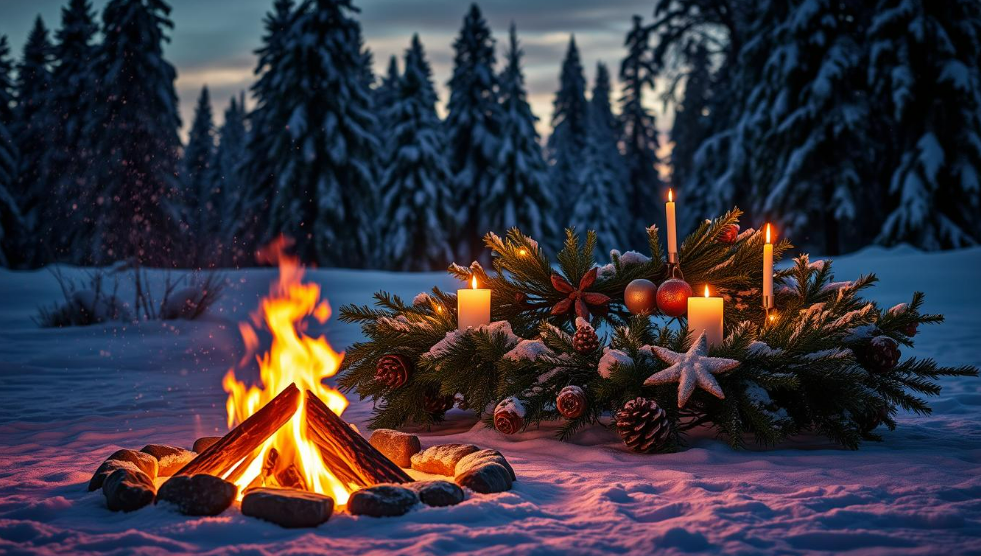
| Solstice Ritual | Cultural Association | Symbolic Meaning |
|---|---|---|
| Yule Log Burning | Scandinavia | Honoring the sun’s rebirth and return of warmth |
| Stonehenge Sunrise Gathering | Celtic Druids | Witnessing the sun’s gradual reemergence |
| Yuzu Bath | Japan | Seeking good luck and blessings for the new year |
| Oak King vs. Holly King | European Pagan Traditions | Symbolic battle between summer and winter, light and dark |
These solstice rituals and winter ceremonies remind us of our deep connection to the natural world. They highlight the profound significance of the seasonal cycle.
“The winter solstice is a time to pause, reflect, and honor the cyclical nature of life. It is a sacred moment when the darkness gives way to the light, reminding us of the eternal dance of renewal.”
Impact on Agriculture and Ancient Societies
The winter solstice was key for ancient farming and survival. It was the start of the coldest months, called the “famine months” from January to April. Farmers used it to plan when to plant crops and breed livestock.
Historical Farming Practices
Ancient farmers knew the solstice well. They watched the sun to plan their work, readying for winter. Buildings like El Castillo in Mexico were built to align with the solstice sunrise.
Food Storage and Survival Strategies
Storing enough food was a big worry for ancient people during the solstice. They used special ways to keep food fresh and shared it to make sure everyone had enough. The Maya tied their farming to the sun’s cycle, marking the solstice as a key time.
The Maya also left behind greenstone axes, likely for solstice offerings. The solstice was important for hunting too, guiding animal migrations and hibernation. Today, we still celebrate this time of renewal.
| Ancient Farming Practices | Modern Solstice Celebrations |
|---|---|
| Crop planting and livestock breeding timed to solstice | Yule, Dongzhi, and Inti Raymi festivals |
| Food preservation and communal sharing strategies | Rituals and ceremonies honoring the return of light |
| Observation of animal hibernation and migration patterns | Reconnection with nature’s rhythms and cycles |
“The sun remains a vital force in our lives, providing essential heat and life to the planet, highlighting the ongoing cyclical nature of life on Earth that solstice observances aim to reaffirm.”
The winter solstice was crucial for ancient farming and survival. They planned their farming and food storage with great care. Today, the solstice still inspires us, reminding us of our connection to nature and our strength.
Astronomical Observations and Predictions
Ancient civilizations made accurate astronomical observations and predictions for the winter solstice. They created calendars and built structures aligned with the solstice sun. The Maya, for example, built buildings in Tulum that create a starburst effect on solstice days.
Today, astronomers use advanced technology to predict solstice timings years in advance. These predictions help us understand long-term climate patterns and keep accurate calendars.
About 5,000 years ago, Neolithic civilizations showed an early understanding of astronomy. They predicted and used the Sun’s motions for ceremonies. The Great Pyramids of Egypt and Stonehenge in England were built later than Newgrange in Ireland. Newgrange is an example of ancient architecture that predicted and used the Sun’s movements.
- The analemma, a figure-eight pattern, shows the Sun’s position changes across the year. This is due to Earth’s tilt and changing distance from the Sun.
- At Newgrange, a narrow ‘lightbox’ was designed to allow sunlight to illuminate the inner chamber during dates around the winter solstice in late December. This shows the precision and alignment with astronomical events in ancient architecture.
- The analemma can be recorded through photography over the course of a year. It displays the Sun’s varying positions at different times. Or, it can be plotted on graph paper using mathematics and instruments like a shadow stick and a watch. Both methods represent year-long projects that connect individuals with Earth’s orbit around the Sun.
- Equinoxes occur twice a year, in March and September. They mark points where the Earth experiences roughly equal hours of day and night. This signifies transitions between the seasons of winter and summer.
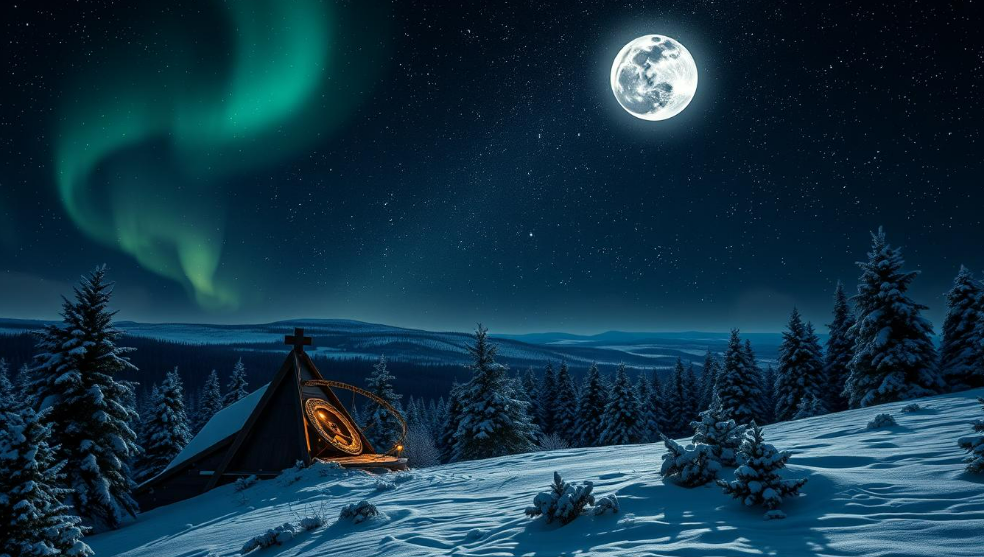
The winter solstice has been celebrated with various festivals like Yule, Saturnalia, and eventually Christmas. The precession of the equinoxes causes a circle to be traced on the sky once every 26,000 years. This impacts the onset of seasons over a year. The Gregorian calendar was introduced to adjust for this discrepancy, shifting New Year’s Day from March 25 to January 1. Mars also experiences seasons and a precession of the equinoxes, with one full Martian precession lasting around 167,000 years.
“Astronomical observations and predictions have been integral to human civilization for millennia, guiding our understanding of the natural world and our place within it.”
The winter solstice, with its astronomical significance and cultural traditions, continues to captivate and inspire people around the world. By exploring the rich history and ongoing relevance of this annual celestial event, we can deepen our connection to the rhythms of the natural world and the cosmos that sustain us.
Modern Celebrations and Spiritual Practices
As winter solstice nears, modern celebrations mix old traditions with new spiritual practices. People focus on self-reflection, renewal, and connecting with nature. They often meet at places like Stonehenge to celebrate the season’s change. Others create their own rituals at home.
The idea of “wintering” – embracing quiet and reflection – is becoming more popular. Modern pagans and Wiccans celebrate with rituals honoring nature’s cycle. In cities, festivals blend art, music, and environmental awareness, bringing people together.
Winter solstice practices include lighting candles, journaling, and meditating. The “Light Within” ritual uses a white candle, evergreen, and a mirror. The “Winter Solstice Meditation” takes place in a quiet forest at midnight. The “Skull Shining Breath” exercise helps warm the body.
The winter solstice marks the longest and darkest night of the year. It’s a time for self-reflection and healing. Many use it to let go of old habits, set new goals, and welcome the sun’s return.
The winter solstice invites us to pause, reflect, and honor nature’s cycles. Whether we follow ancient traditions or explore new spiritual practices, it’s a special time.
| Traditional Solstice Rituals | Modern Solstice Celebrations |
|---|---|
| Yule log burningEvergreen decorationsFeasting and storytellingHonoring the Winter Goddess | Meditation and breathworkSolstice sunrise gatheringsCrafting personal ritualsCommunity-based festivals |
“The winter solstice is a time to honor the darkness, to sit with the quiet, and to allow the light to slowly return.”
Conclusion
The winter solstice is a moment for seasonal reflection and celebration. It shows our bond with Earth’s natural cycles and our shared journey through darkness and light. As we experience this event, we’re encouraged to stop, think about the year that’s passed, and look forward to longer days.
Whether through old traditions or new ones, the solstice gives us a chance to renew ourselves and our communities.
The winter solstice significance is seen across cultures, showing our understanding of the universe and our role in it. From ancient monuments to festivals, this event has always fascinated and inspired us. Celebrating the solstice connects us to nature’s rhythms and our quest for meaning in life’s cycles.
In the end, the winter solstice teaches us about life’s duality – the balance of light and dark, the changing seasons. Reflecting on this moment, we find comfort in knowing that even the longest nights will soon welcome the sun’s return. This reminds us of our own strength and ability to heal and grow.
Blessed Be!

FAQ
What is the winter solstice?
The winter solstice is the shortest day and longest night of the year in the Northern Hemisphere. It usually happens around December 21st.
What causes the winter solstice?
The Earth’s tilt of 23.4 degrees causes the North Pole to point away from the Sun in winter. This leads to the winter solstice.
When does the winter solstice happen each year?
The winter solstice falls on December 21st or 22nd. In 2024, it will be on December 21st at 9:21 AM GMT in the UK.
How do ancient civilizations commemorate the winter solstice?
Ancient cultures built monuments like Stonehenge in England and Newgrange in Ireland. These sites were for solstice rituals and celebrations.
What is the cultural significance of the winter solstice?
The winter solstice is about rebirth, renewal, and light over darkness. It’s celebrated with rituals, feasting, and honoring the sun’s return.
How do people celebrate the winter solstice today?
Today’s celebrations mix old traditions with new ones. They focus on renewal and connecting with nature. Activities include visiting ancient sites, creating personal rituals, and hosting festivals with art and music.
How does the length of day and night change on the winter solstice?
The Northern Hemisphere has its shortest day and longest night on the winter solstice. In London, the shortest day is 7 hours, 49 minutes, and 42 seconds, much shorter than summer.
How does the winter solstice relate to the seasons?
The winter solstice starts astronomical winter, but meteorological winter begins on December 1st. This is because meteorologists divide the year into four consistent seasons, while the solstice is a specific event.
How did the winter solstice impact ancient agricultural societies?
For ancient farmers, the winter solstice marked the start of the coldest months. It helped plan crop planting, livestock breeding, and food storage.
How accurate were ancient civilizations’ astronomical observations of the winter solstice?
Ancient people made very accurate observations and predictions for the winter solstice. They built structures aligned with the solstice sun. Today, astronomers use advanced tech to predict solstice timings years ahead.

